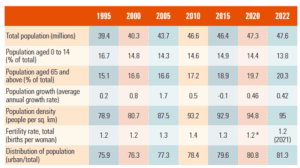Avoiding Unwelcome Surprises in Roth IRA Conversions: A Case Study

Option 3: Dole Out the Savings in Four Parts
The other option is to convert $100,000 per year for the next four years. She’ll land in the 32% tax bracket each year. The asset value of the remaining IRA will fluctuate over the next three years, but overall, taxes owed could be meaningfully less.
At first glance, she prefers Option 3 to stretch out tax payments. But that’s not the full analysis.
Putting Social Security, Medicare Into the Mix
Lynne’s financial advisor needs to bring in additional information. Key to know is when she is planning to retire. Lynne is 62 this year, planning to retire at 65 if she keeps her job. When she retires, she’ll start Social Security and Medicare right away.
If she chooses option 3, it adds an extra $100,000 to her first year of retirement. That not only increases her tax bill overall, but also makes 85% of her Social Security benefit taxable.
Furthermore, she’ll be subject to IRMAA — Income-Related Monthly Adjustment Amounts — on her Medicare Part B and Part D premiums. That’s an additional monthly amount she’ll owe for having high income in retirement.
If Lynne converted $100,000 to her Roth IRA each year between ages 62 and 65, she lands in the 32% tax bracket. Behind the scenes, her future Medicare Part B premium jumped from the base premium of $170.10 to $544.30 plus Part D premium of $71.30.
That’s an additional $5,346 she’ll owe for Medicare using 2022 premiums. (Medicare premiums are based on MAGI from two years earlier).
The same IRMAA will also apply for two additional years as her age 67 Medicare premiums will be determined on her age 65 MAGI.
All Is Not Lost: Time to Appeal
Lynne can file form SSA-44 to request a recalculation of her Part B premium due to a qualifying life event (retirement). Lynne expects her income in retirement to be about $85,000, including Social Security. That puts her in the 22% tax bracket and keeps her in the standard Part B Medicare premium tier. Social Security benefits will still be taxable.
Converting to a Roth IRA can be an effective strategy, especially when a client has a specific purpose for the money. However, financial advisors need to connect all the dots of making this financial move by reviewing these issues:
Social Security becomes part of taxable income, but at what tax rate?
Clients risk higher Part B and D premiums for one or more years.
Additional steps must be taken to file an appeal multiple years into retirement.
Roth conversions can bring unwelcome surprises. Help clients avoid the hidden traps.
Marcia Mantell is the founder and president of Mantell Retirement Consulting, Inc., a retirement business development, marketing & communications, and education company supporting the financial services industry, advisors, and their clients. She is author of “What’s the Deal with Retirement Planning for Women?,” “What’s the Deal with Social Security for Women?” and blogs at BoomerRetirementBriefs.com.





